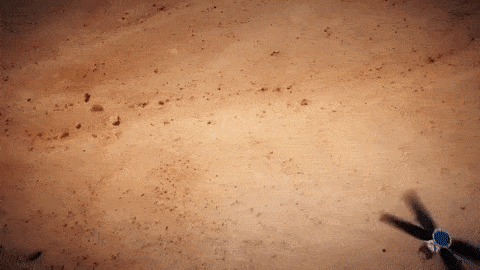Not content to purely rove on Mars, NASA is also taking to the air. The Mars 2020 Rover (which is scheduled to land on the Red Planet in early 2021) will include a helicopter — the first heavier-than-air vehicle to fly in the thin Martian atmosphere.

The helicopter will be deployed from the rover. The rover then will be driven away from the helicopter to a safe distance from which it will relay commands. After its batteries are charged and a myriad of tests are performed, the helicopter will begin the first autonomous flight on an extraterrestrial body in history.
“The Mars Helicopter’s initial flight will represent that planet’s version of the Wright Brothers’ achievement at Kitty Hawk and the opening of a new era,” said Susan Gorton, NASA’s manager for the Revolutionary Vertical Lift Technology (RVLT) project. “For those of us whose research revolves around all things related to flight, that would be a remarkable, historic moment.”
The body of the helicopter will be about as big as a softball. It will weigh just under four pounds (1.8 kilograms) and have two sets of rotor blades — each measuring four-feet long — spinning at 2,400 RPMs. That’s about 10 times faster than any helicopter you might find on Earth. A solar array on the top of the vehicle will recharge the batteries, which will be used to both rotate the blades and keep it warm during Mars’ cold nights (Insight recorded a balmy high of 4 degrees Fahrenheit [-15 Celsius] on March 24).
The helicopter will only fly some 15 feet above the Martian surface, but don’t dismiss that distance. The intended landing point for the 2020 Rover is the equivalent to 100,000 feet (30,000 meters) above the surface of our home planet, which is almost 19 miles up. No helicopter has reached even half that height here.
NASA plans to attempt up to five flights, from 330 feet to 3,300 feet (100 to 1,000 meters) away from the lander, each lasting 90 seconds. While it won’t have any scientific instruments on it, the helicopter will have a small high-resolution color imager.
“We envision helicopters opening doors to new types of exploration on Mars,” said Håvard Grip, flight-control and aerodynamics lead for the Mars Helicopter. “In the future, we could imagine doing things like (engaging in) regional exploration using multiple helicopters or going to inaccessible areas or biologically sensitive areas using small helicopters.”
This isn’t NASA’s only rotor-flight machine in the works. A mission aptly-named Dragonfly will hope to introduce a quadcopter lander to Titan, Saturn’s largest moon, in 2020.






